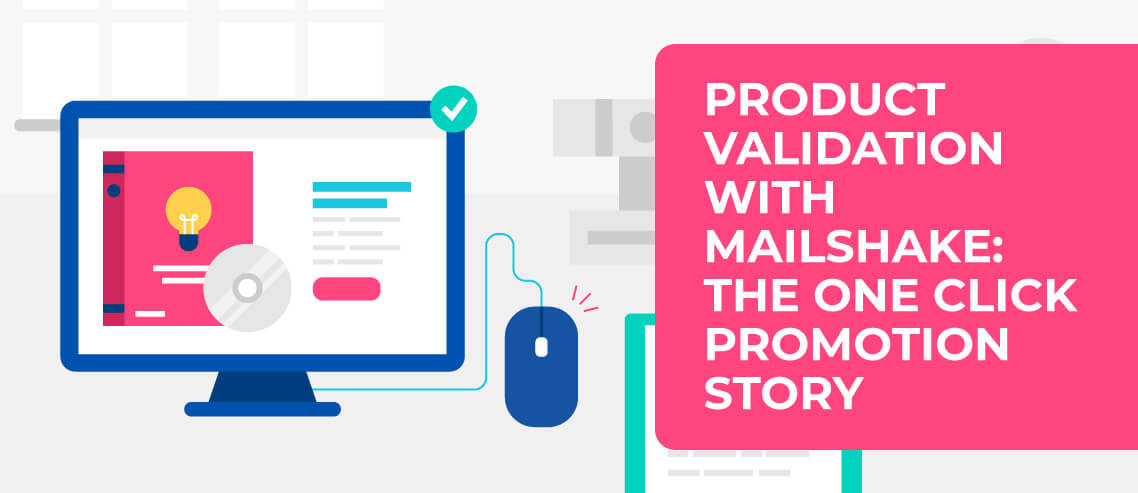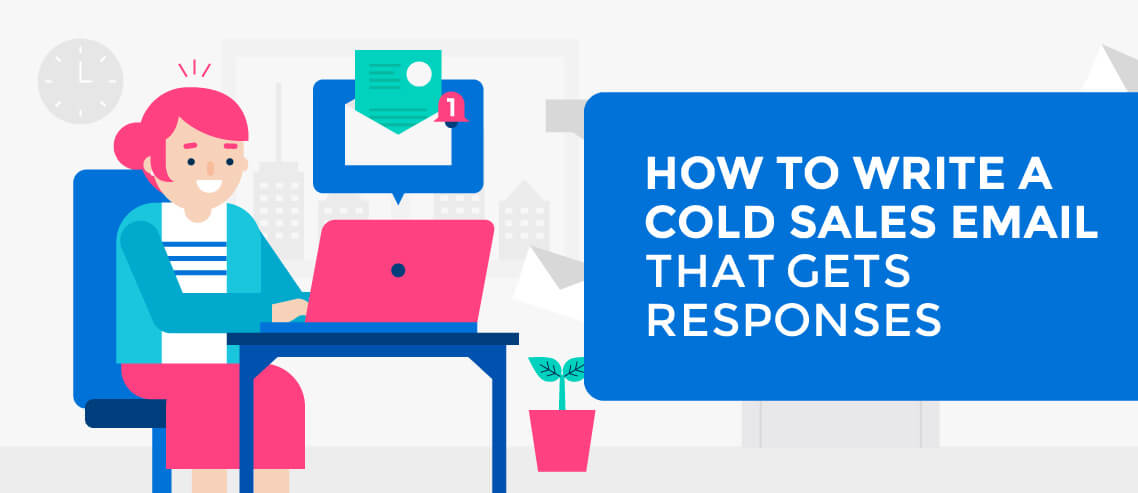How to Run an Outreach Campaign That Uses Content to Generate Leads for Your Agency

Contents
Most businesses create content for their blog to generate leads and turn those leads into customers. While inbound marketing is effective, it takes time to generate results. As someone involved in SEO, I can testify just how much time and effort it takes to see results.
If you’re involved in sales, SEO can feel like the equivalent of watching paint dry. Yet the content that you have produced, which nobody is viewing, has value. In this guide, I want to share a B2B cold outreach strategy you can use to generate leads without waiting for Google to recognize your efforts.
Why Use Content In your Outreach
 Cold outreach allows you to connect with people who fit your ideal customer persona. With B2B cold outreach, you are rarely looking to make a sale directly. Rather, you are seeking a response to your message.
Cold outreach allows you to connect with people who fit your ideal customer persona. With B2B cold outreach, you are rarely looking to make a sale directly. Rather, you are seeking a response to your message.
If you can generate a response and get that person on a call, you can push them down your sales funnel.
Most agencies and freelancers I’ve encountered use cold outreach for lead generation. Often, they use one of the following resources as a hook to generate a response:
- Strong service offering: it could be a special offer, or something similar
- Consultation: get the person on a call and show your expertise
- Case study: show expertise and your ability to deliver results
Each of these approaches can be effective. I’ve read many case studies of agencies implementing one or all of these strategies to generate leads. I’ve yet to read a case study of an agency using blog content in its sales outreach.
My agency, Launch Space, relies heavily on cold outreach to generate sales. For the last few months, I’ve been experimenting with utilizing blog content as a sales asset. The results have been impressive. We’re securing an average of two new clients a month.
For an agency, that’s a decent number.
I’ll admit, we’ve yet to implement a coherent sales and marketing strategy. Once we’ve secured two clients in a month, we close our doors and hire more staff. We could probably scale our growth, but the quality of service delivery would suffer.
The average order value for a new client is over $1,000. In 80% of cases, we increase the average order value within a quarter to a minimum of $2,000 a month. A single client is, therefore, worth around $24,000 gross a year to the business. With two new clients a month, that’s averaging out at around $48,000.
Safe to say, the business is growing fast. In the remainder of this post, I’ll discuss how we conduct our cold outreach and provide examples of the email templates we use. It’s going to be a step-by-step guide. Follow along, then feel free to test these strategies for your business.
What Type of Content Should You Share
 You don’t need a large amount of content on your blog to run the cold outreach strategy I’m about to share. You don’t even need to publish the content on your blog.
You don’t need a large amount of content on your blog to run the cold outreach strategy I’m about to share. You don’t even need to publish the content on your blog.
More on that later…
The content you produce and share should have the following characteristics:
- Actionable: reveal something about the service you provide
- Relevant: how the service benefits the customer, with some examples
- Awesome: create great content. The content you’ll be sharing is the first impression a potential customer will have of your business.
That benefit to the customer is vital. If the person reading your content doesn’t think it’s relevant, you’ll never generate interest.
At this point, you probably want an example of some content. Here’s a piece of content that I’ve used in my outreach: How to Scale Your Guest Posting Ethically
If you check out the content, you’ll see that it is:
- Actionable: a step-by-step guide on how we run guest post campaigns at Launch Space. This is our primary service offering
- Relevant: if you’re part of a marketing team at a SaaS company, my target audience, you’ll find the content useful
- Awesome: It is a good piece of content that is easy to follow
The article should give you an idea of the type of top of the funnel content for cold outreach.
If you’re not sure what kind of content to produce, consider your customer pain points. You can conduct interviews with existing customers to see what type of problems they have that you’re solving. List your ideas and then pick the best ones.
Below are a couple of examples that I might send as an SEO agency:
- The Definitive Guide to Optimizing Site Speed – send this article to businesses with a slow website
- How to Guest Post Like a Pro & Double Your Traffic – send to companies who need help scaling their traffic
- The Definitive Guide to On-Site Optimization – send to businesses who have issues with internal linking, and website structure
You can probably see where I’m going with this.
Identify a need, and offer a relevant solution. If you can do this, you drastically improve your chance of getting a response. It’s not rocket science. It’s logic.
Once you’ve written your content, put it through a grammar checker.
Onsite Content Vs. Guest Post Content
You can publish the content you want to use for cold outreach on your blog. There are benefits to this. For a start, when a person receives your message, one of the first things they’re going to do is check out your website.
Great content on your website is there to engage your audience and show that you can solve their problems. You need to have some awesome content on your website.
The content you use in your outreach doesn’t need to be published on your blog, though.
I’ve run several outreach campaigns based around guest post content. Here’s an example of a post that I’ve used that is published on Sumo: How to Grow Your Professional Network & Consistently Land Guest Posts
The theme of the content is very similar to my guide to guest posting on Launch Space. The benefit of using this content over the post on my site is Kudos.
Sumo is an 8-figure business founded by Noah Kagan, probably more famous for AppSumo. If you’re involved in SaaS marketing, there’s a very high chance you’ll be familiar with the company. It’s something close to the SaaS equivalent of getting a feature on Entrepreneur.
When you leverage the credentials of a larger business, people are more likely to take notice. That means that they’re more likely to respond to your message, which is your goal.
How to Create a List of Your Ideal Customers
 Once your content is in place, it’s time to pull together an outreach list. Some great articles cover how to create an outreach list. Here’s a good example.
Once your content is in place, it’s time to pull together an outreach list. Some great articles cover how to create an outreach list. Here’s a good example.
Creating an outreach list is straightforward.
Refer to your customer persona. The customer persona should list things like what industry you are targeting, its minimum revenue, and other factors.
Now, build up a list of companies that fit that persona. There are numerous ways you can go about this. You can use resources like the Inc 5,000 list, Google My Business, local business roundups, and more.
Once you’ve created your list, head over to LinkedIn, search for the company, and connect with the relevant people. If you are targeting a US company, look for people who have words like “Chief,” “Officer,” or “President” in their job title. For example, Chief Marketing Officer or Chief Operating Officer.
In the UK, the person in charge has the word “Manager” in their job title.
Whatever their title, you are looking for the key decision-maker involved in purchasing decisions. Once you’ve connected with that person, use an email address finder to get their details.
Create Your Email Template
You need a great email template for your outreach. Creating an engaging outreach email takes practice. Even when you know what you’re doing, you should create a couple of variations of a template and split test them because some messages will generate a higher response rate.
You won’t know which version of the copy will convert the best until you run a test. That’s where tools like Mailshake, which allow you to compare results come in handy.
My email copy always has the following characteristics:
- Short: I rarely write an email that is more than three to four paragraphs
- Direct: The tone is friendly and professional. I don’t use humor because humor is subjective. John Caples, David Ogilvy, and many other now deceased copywriters never used humor to sell. I just accept that advice
- Clear CTA: It should be obvious what action you want the person to take
- End with a Hook: I’ll either use a PS or the email signature as a final hook
The email copy should always have a clear customer focus. If you haven’t written a cold outreach email before, use proven copywriting formulas for your copy. Here’s a nice article from Cophackers covering the underlying principles of writing copy to use as a reference.
For more tips on writing cold email outreach templates, check out the Mailshake guide.
Example Outreach Campaigns
In the main, the content outreach campaigns that I run are straightforward. I identify relevant companies that fit my target audience – SaaS companies and now marketing agencies – and send them a cold email with a resource link and a value proposition.
Below is one such example of a campaign template.

The guest post I wrote for Sumo is the primary resource in this outreach template.
The email signature links to a landing page. It’s a long-form sales page, with more information about what we do and how we help clients.
We sent this email to 100 companies and got two new clients.
The value proposition is straightforward. I discussed what we offer, how much we charge, and provided proof of our expertise in one email.
These outreach campaigns follow a proven formula. Where things get interesting is when you experiment, and you should test. For example, I ran a campaign targeting all of the people who left a comment on the Backlinko blog.
It was a rather long-winded campaign. There were a lot of comments to review and people’s profiles to analyze. Below is the template we used.

We were doing this campaign to expand my professional network rather than generate sales. Still, we secured a couple of SEO agencies as clients. We decided to expand from just targeting SaaS agencies to offering a white label guest posting service.
I hadn’t expected this outcome at the start of the campaign. It goes to show that cold outreach can take your business in a new direction.
Summing Up
The content you produce for your blog and the guest posts you create can be valuable sales resources. In this guide, I wanted to share an example of using content in your cold outreach. I shared the approach I’ve been taking and the results that I’ve got from this approach.
There’s nothing particularly complex about what we’ve been doing. Cold outreach is something that a lot of agencies undertake. What I wanted to share is a slight twist on a proven formula. If this article inspires you, you will hopefully try this approach. At a minimum, I hope the article becomes a resource that highlights the importance of experimentation and trying something different in your sales approach.





